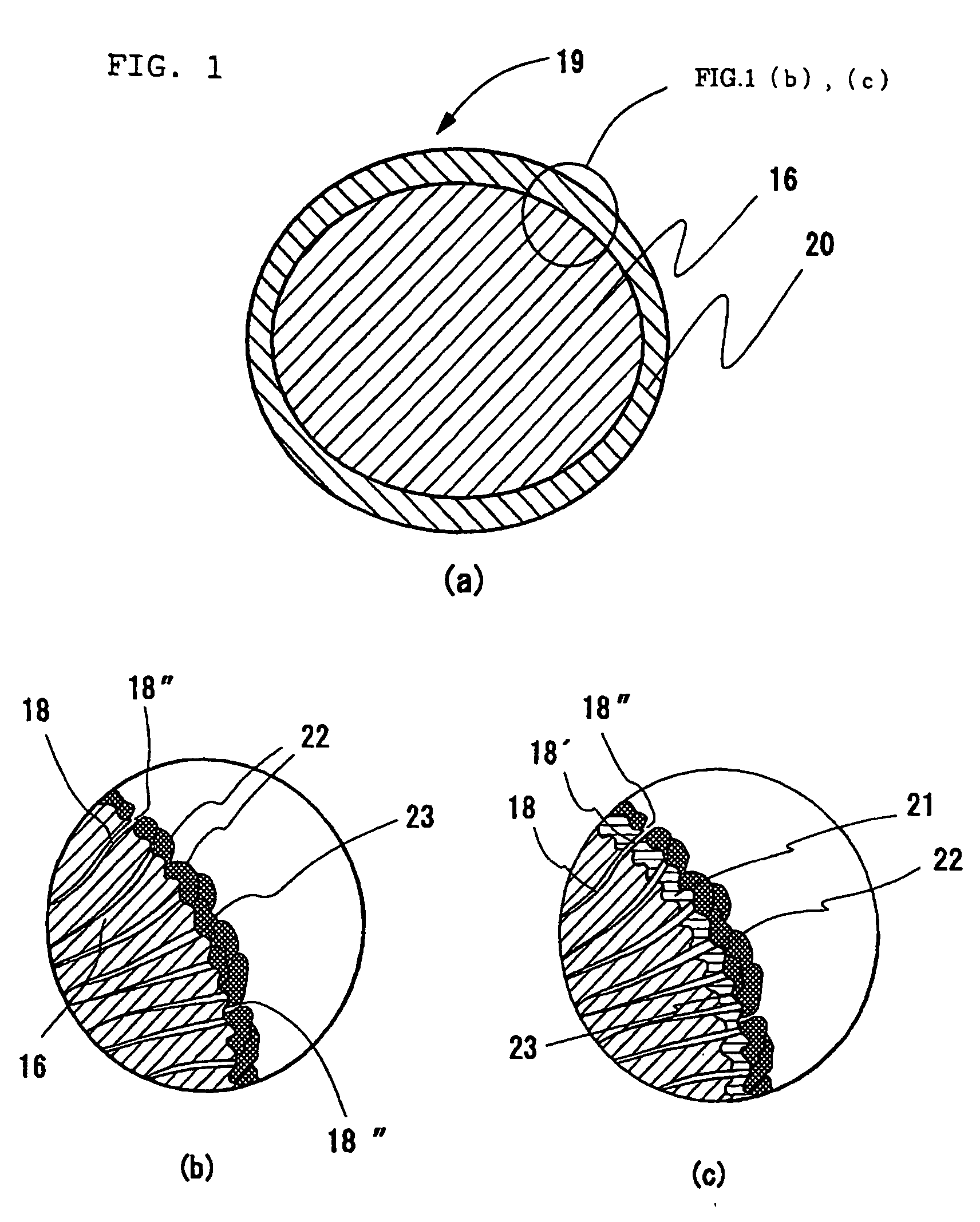Nickel electrode and alkali storage battery using the same
a technology of alkali storage batteries and nickel electrodes, which is applied in the direction of positive electrodes, alkaline accumulator electrodes, cell components, etc., can solve the problems of poor electron conductivity, poor binding property of materials, and poor electron conductivity, and achieve excellent electronic conductivity, high energy density, and high performance.
- Summary
- Abstract
- Description
- Claims
- Application Information
AI Technical Summary
Benefits of technology
Problems solved by technology
Method used
Image
Examples
example
Example 1
[0096] A three-dimensional electric conductive electrode substrate was fabricated that has innumerable fine hollow concaves and convexes obtained by passing a hoop-like nickel foil having a thickness of 30 μm through the space (may be the space between rollers) between molds having conical concaves and convexes and pressurizing. Those closest to the convexes (the concaves) are all concaves (the convexes); the diameter of the hollow, substantial cone of the concaves (the convexes) is from 60 to 80 μm in root, with the tip being from 35 to 45 μm; the latter was made thin in thickness by strongly processing from the tip and bottom sides with two plate molds having concaves and convexes to make most of the tip ends open. The thickness of an electric conductive electrode substrate three-dimensionally made with concaves and convexes was set equal to 500 μm, which was thicker than that of the final electrode by 100 μm. The pitch between the two convex (or the pitch between the tw...
example 2
Ti or Y Solid Solution
[0100] The Ni / MH battery of Example 2 was obtained as described in Example 1 with the exception that active material powders with thin film layers provided are used in which fine powders mainly composed of Co(OH)2 are pressed on surfaces of core powders composed of 50 wt. % of Ni oxide (Ni (OH)2) and 50 wt. % of mixed powders in which CoOOH layers (3 wt. %) are arranged in said Ni oxide. In said active materials, said nickel oxide contains about 2 wt. % (converted to Ni metal) of Co and about 4 wt. % of Zn in a solid-solution state and said CoOOH layers or thin film layers contain about 8 wt. % (converted to Co metal) of Ti or Y in a solid-solution state in said Co oxide layers or contain about 10 wt. % of powders of TiO or Y2O3 mixed in said thin film layers, and particle diameters of powder materials are 15 to 20 μm.
example 3
Ca or Cd Solid Solution
[0101] The Ni / MH battery of Example 3 was obtained as described in Example 1 with the exception that active material powders with thin film layers provided are used in which fine powders mainly composed of Co(OH)2 are pressed on surfaces of core powders composed of 50 wt. of Ni oxide (Ni (OH)2) and 50 wt. % of mixed powders in which CoOOH layers (3 wt. %) are arranged in said Ni oxide. In said active materials, said nickel oxide contains about 2 wt. % (converted to Ni metal) of Co and about 4 wt. % of Zn in a solid-solution state and said CoOOH layers or thin film layers contain about 8 wt. % (converted to Co metal) of Ca or Cd in a solid-solution state in said Co oxide layers or contain about 10 wt. % of powders of CaO or CdO mixed in said thin film layers, and particle diameters of powder materials are 15 to 20 μm.
PUM
| Property | Measurement | Unit |
|---|---|---|
| tapping density | aaaaa | aaaaa |
| specific gravity | aaaaa | aaaaa |
| thickness | aaaaa | aaaaa |
Abstract
Description
Claims
Application Information
 Login to View More
Login to View More - R&D
- Intellectual Property
- Life Sciences
- Materials
- Tech Scout
- Unparalleled Data Quality
- Higher Quality Content
- 60% Fewer Hallucinations
Browse by: Latest US Patents, China's latest patents, Technical Efficacy Thesaurus, Application Domain, Technology Topic, Popular Technical Reports.
© 2025 PatSnap. All rights reserved.Legal|Privacy policy|Modern Slavery Act Transparency Statement|Sitemap|About US| Contact US: help@patsnap.com



